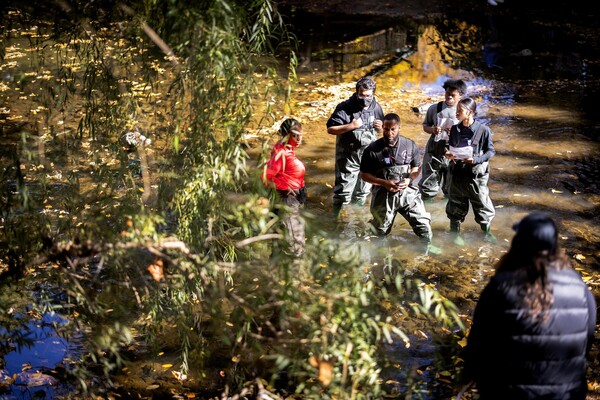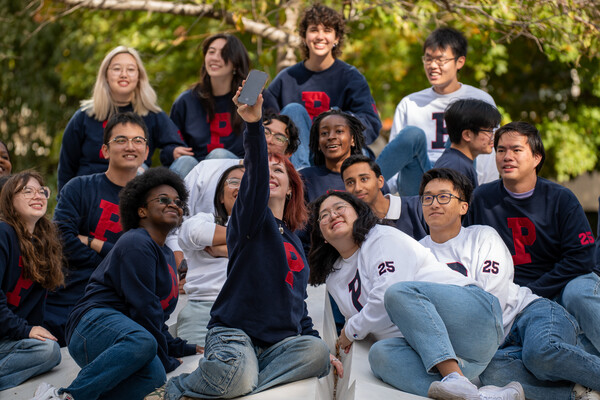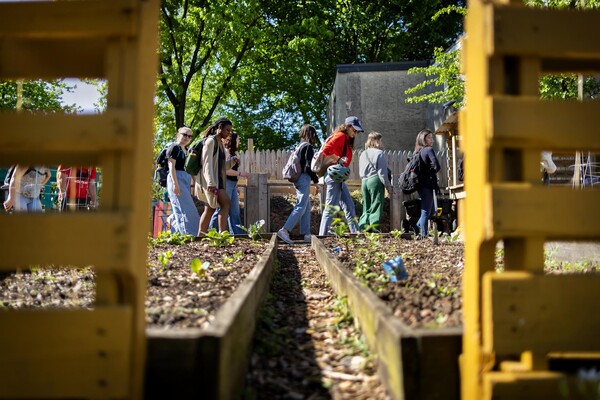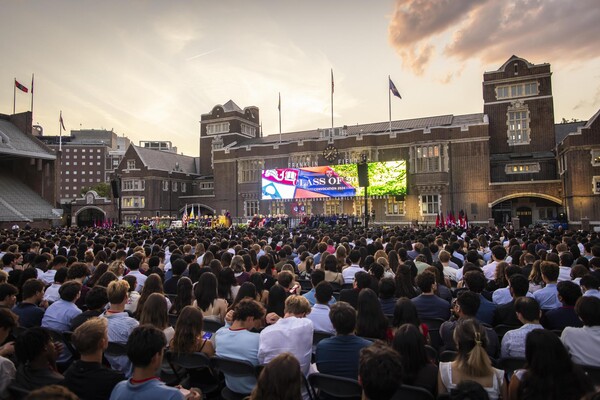Out & About: Saturdays at the stadium
It’s late September, summer is gone and football season is back.
In football-crazy college towns like Ann Arbor, Knoxville, Columbus and State College, autumn’s return brings tailgaters as far as the eye can see on Saturday mornings and crowds of more than 100,000 packing stadiums later in the day. It’s a weekly spectacle of fandom that surpasses even what you’ll find at America’s NFL stadiums.
Here at Penn, of course, the Saturday scene is a tad more subdued: Crowds usually number around 13,000, and the national spotlight falls on West Philly only once in a while. But college football at Penn is still a sight worth seeing, and Ivy League football fans will tell you that their brand of the college game—played by non-scholarship players who can honestly be called “student-athletes”—is the purest to be found anywhere.
This year, faculty and staff at Penn have one more reason to experience Ivy League football first-hand: The University recently announced Penn football games this fall will be free for Penn employees.
Staffers that take up the offer will not only be treated to some good football—Penn has fielded the most consistent Ivy League squad over the past few years, posting a record of 23-2 at home over the last five years—but also the experience of watching a game in one of America’s most historic, if underappreciated, football stadiums: Franklin Field.
The old stadium at 33rd and South may not get the publicity that its neighbor, the Palestra, enjoys, but it’s hard to figure why.
Franklin Field, like the Palestra, is steeped in history—and has played a major role in college football’s evolution for a century.
A storied history
Franklin Field was finished in 1895 at a cost of $100,000 and is today the oldest college stadium in the country still being used for football. At one point, the stadium's capacity reached 80,000, and it regularly packed in sell-out crowds during Penn’s glory years. Later, the stadium was refurbished to better suit the Penn Relays, and today has a capacity of just over 52,000.
The stadium was considered among the best facilities in the country on its opening, and as a result, it played host not only to Penn sports, but a variety of other regional and national events as well.
Between 1899 and 1925, the stadium was home to the annual Army-Navy game—maybe college football’s most storied rivalry, now played across town at Lincoln Financial Field—and served as home field for the Philadelphia Eagles for many years. Franklin Field has also hosted the Penn Relays, America’s greatest track meet, for more than a century.
With so much going on throughout its early years, it’s no surprise that Franklin Field has been the site of some truly historic football moments: It was the setting for the first-ever football radio broadcast in 1922 and the first football telecast in 1939; In 1925, one of the game’s all-time greats, Red Grange of the University of Illinois, came to Franklin Field and racked up an amazing 331 rushing yards, setting a new NCAA record. And in 1960, the stadium was host to Green Bay Packers coach Vince Lombardi’s first and only playoff loss—to the Eagles, on the day of their last championship (yes, it’s now 45 years and counting, Eagles fans).
Today, because of the shift in media attention to universities in scholarship-granting conferences such as the Southeastern Conference, Big Ten and PAC-10, the days of sell-out crowds at Franklin Field are forever probably a thing of the past. But even though the Quakers, and Ivy League football, now flies under the national radar, Franklin Field is still enough of a draw to garner some occasional national attention.
Just three years ago, in fact, the old stadium was given what may be the biggest honor a venue can receive in the ESPN era—a visit from ESPN’s wildly poplar “ESPN GameDay” pre-game show, featuring analysts and pop icons Chris Fowler, Lee Corso and Kirk Herbstreit.
The visit from the crew—who most often are found on campus at such powers as Notre Dame, Oklahoma or USC—brought a football buzz that West Philly hadn’t seen in years. Fittingly, Penn went on to win that day—and another moment was etched into the old stadium’s history.
This season, who knows what may happen?
.







